Can the Store Lighten a Paint Color
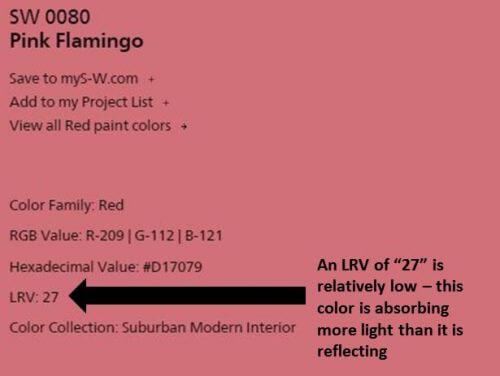
Understanding how paint lightens and brightens — or conversely, how it sucks light away — is lots easier once you understand the concept of Light Reflectance Values: Every paint color is assigned an LRV — its Light Reflectance Value — and this number will help you determine how much light the paint will reflect / absorb. The scale is black/zero to white/100. A low number means dark, a high number means light — and bright!
The LRVs of Sherwin-Williams retro paint colors:
Sherwin-Williams' Suburban Modern paint palette [see the entire palette and also our secret to get big samples here] is a go-to favorite here, so I want to take a look at the LRVs of some of those colors. Regarding the Pink Flamingo above: Were you surprised at its relatively meager light reflectivity? I was! And lookie this…
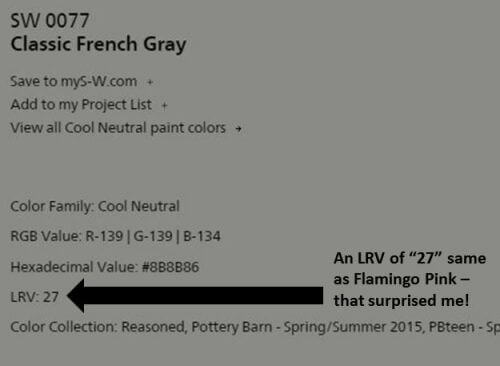
… The LRVs of Flamingo Pink and Classic French Gray — the same, at an almost-lowest 25th percentile of 27. Want a lighter, brighter kitchen? Stay clear, let's aim to get your paint above a 50!
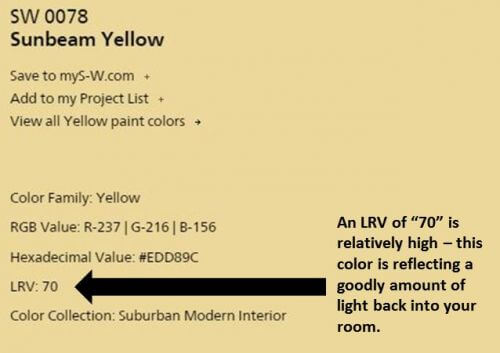
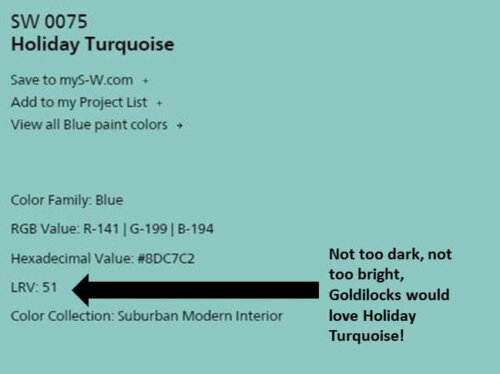
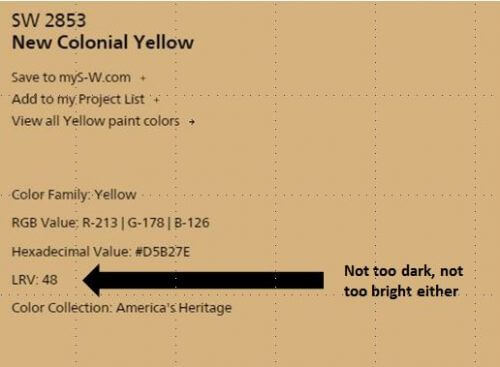
How to use LRVs to choose a paint color:
This article by color experts Lori Sawaya and Albert Sawaya II offered the best info and guidance that I could easily find online. I encourage you to read the entire article, but here are my key takeaways:
- A common guideline for homeowners is to choose mid-value colors, they say. I assume that having a not too bright but not too dark colors gives you maximum control over varying the ambiance. Or could be, it's a recommendation meant to keep us from making mistakes — as in, choose the happy middle and you want end up with a room that is neither too dark nor too light. But I am only guessing about the "why"… Are there any trained interior designers among us who can give us a clearer understanding regarding this recommendation?
- Beware the yellows! When choosing a yellow, you must also pay strong attention to the intensity (a different thing than a value) because yellow is so light reflective that it bounces light off the other yellow walls and intensifies the entire effect. Yes: Yellows are tricky!
Update: Lori Sawaya saw traffic coming to her site from this post and very kindly responded directly to my questions about the 50% recommendation. Here's what she said:
Hi everyone – thanks Pam for linking to my LRV article!
Hopefully, I can answer some of the questions y'all have.
50% LRV as a guideline for residential interiors is about balance, visual ergonomics, and creating a human supportive environ. Mid-range paint colors tend to 'average in' among the other contents in the room, which means there are no harsh or super dramatic lines of contrast. The result is an atmosphere that's easy to live in and colors that are easy to live with. [emphasis Pam's]
LRV for exterior is super duper important. I get a couple emails per year from homeowners seeking expert assistance because their house literally melted. The last one hired an in-store color consultant who decided they needed a custom exterior color. Custom color means the color hasn't been measured for LRV, tested for light fastness, etc. It was a darkish taupe new paint color over an existing pale yellow siding. The entire house buckled and warped. Homeowner is suing the store to have the siding replaced. So, LRV is particularly important to understand for exteriors. Always check manufacturer's specs before you paint any exterior door.
Sherwin Williams is one of very few brands that puts LRV on the back of their chips. Most brands you have to look it up in the fandeck index or look it up online.
Hope that helps! Thanks again for sharing, Pam.
Above: Lori's video takes us through the basics quickly.
Thank you, Lori — yes it does! Makes total sense!
And this article by Sherwin-Williams points out:
- Gloss level also affects the appearance of the color. The higher the gloss level, the higher the light reflectance. I'll add: Gloss level also affects the visibility of wall imperfections — high gloss and you see the boo boos, flat not so much.
- Use LRVs to help plan how to bring light deeper into a room: For example, for a recessed nook off a main room, painting the walls in a lighter tint of the color used in the main room would lighten up the area while still maintaining a sense of flow and coordination.
- There's also a big discussion about how the direction of light entering a room affects the color… and even, how different light bulbs affect the color. Argh, my color-loving head just exploded!
I have now become a fan of LRVs — I feel so much smarter! How about you?


Design inspiration delivered weekly to your inbox
Never miss important news!
Be inspired by real life projects!
By communicating with Retro Renovation you are agreeing to our Terms of Service and Privacy Notice. Before participating, read them in full.
Reader Interactions
Can the Store Lighten a Paint Color
Source: https://retrorenovation.com/2015/06/23/lrvs-light-reflectance-values-paint-color/